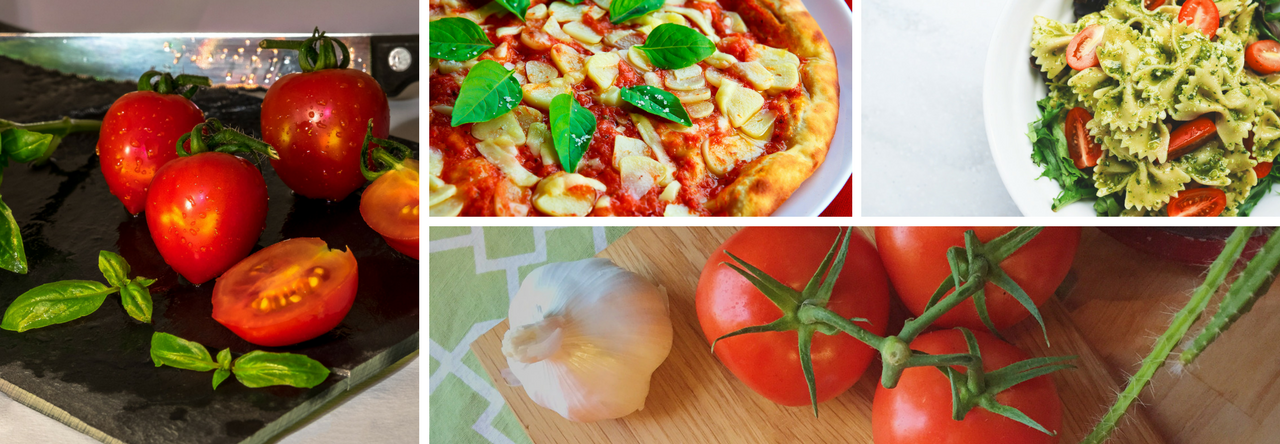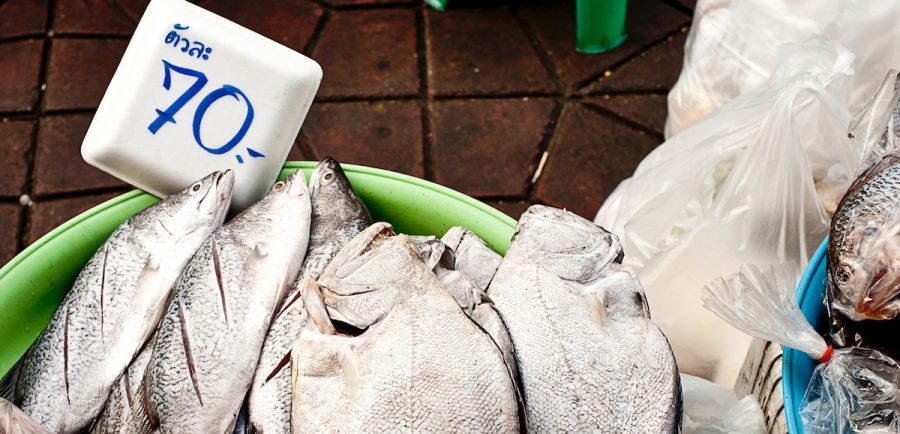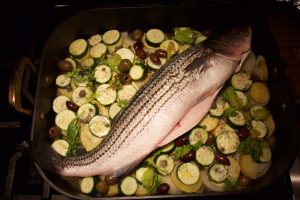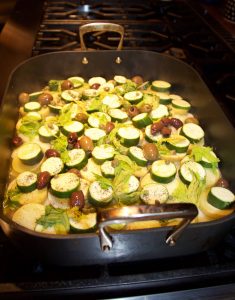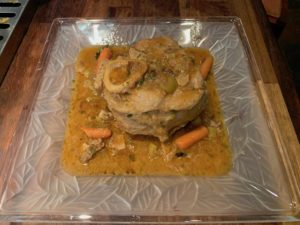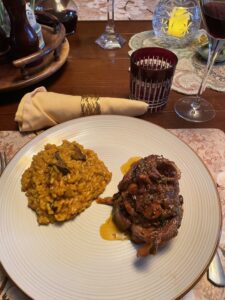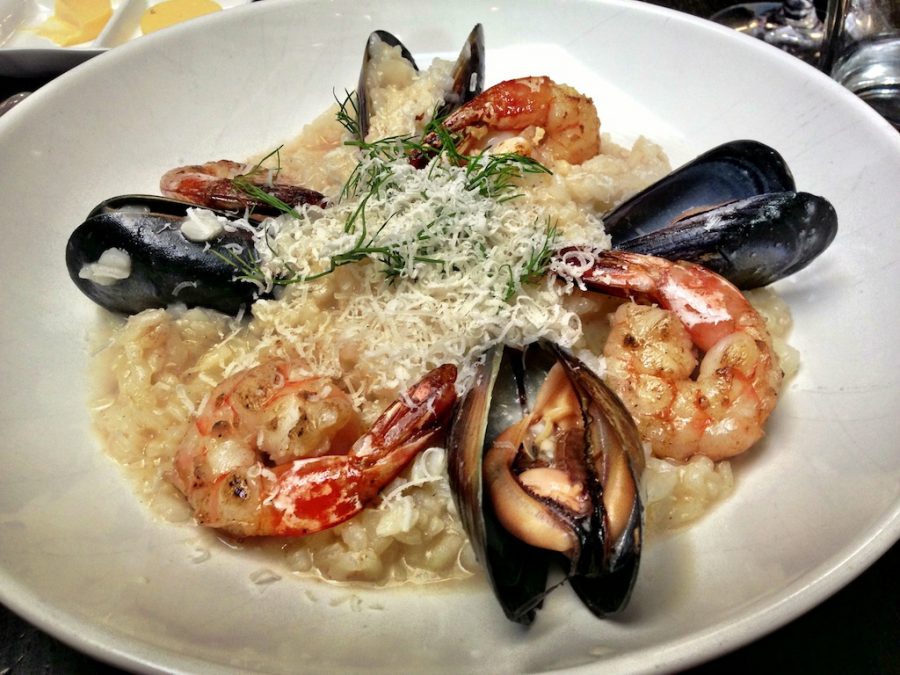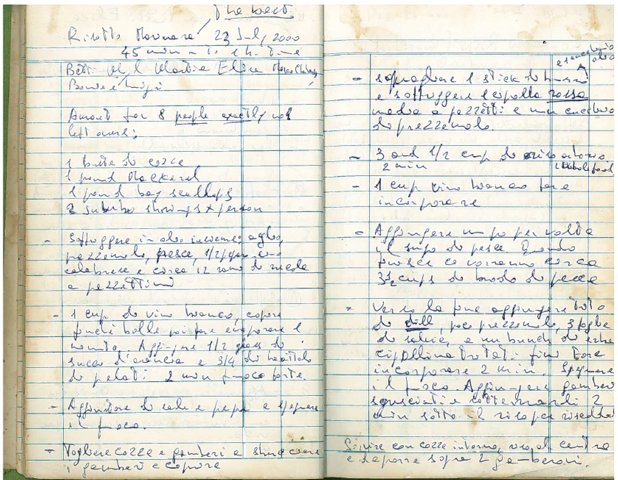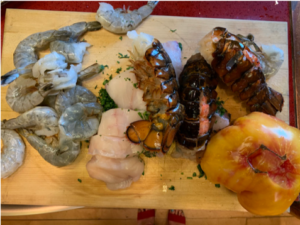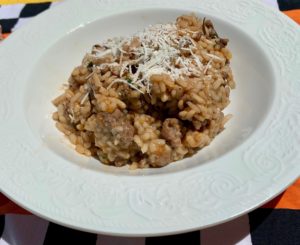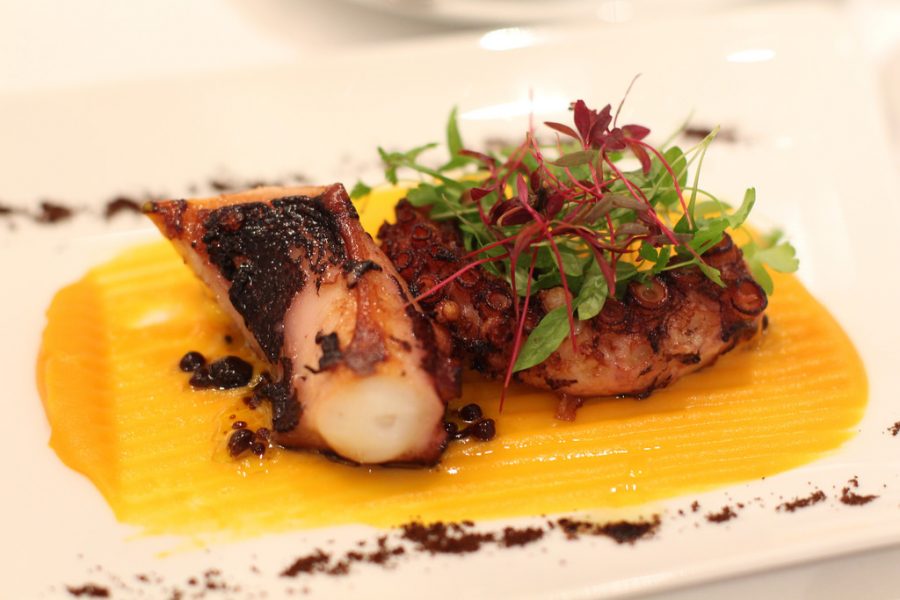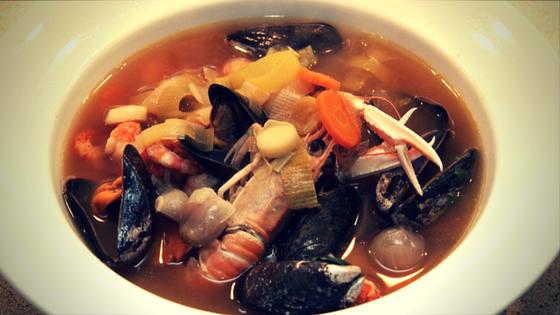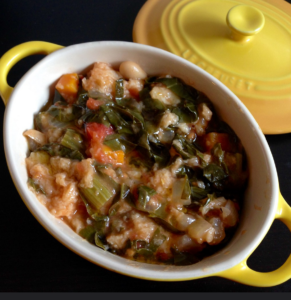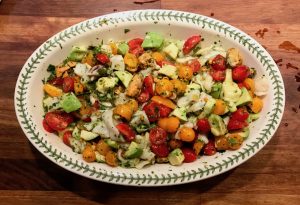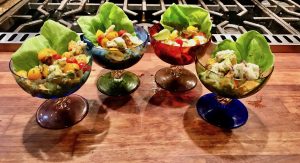Last week, I visited one of my favorite butchers in Oak Park, IL – a place called Carnivore. I saw a giant flounder in their fish case and decided to try it. This recipe is the one I created for the 5.5 pound (2.5 kg) fish I bought from Ciro, the chef who works at Carnivore.
First, you’ll need a large oven, and a large roasting pan.
Ingredients (all basic ingredients you should ALWAYS have in your refrigerator)
- 1 liter of homemade canned cherry tomatoes. Or, if you don’t can your own tomatoes, you can use a box of of Pomì chopped tomatoes (it won’t be quite as good of course, but it will still be good).
- 12 mussels or clams
- 12 cherry tomatoes cut in half
- ½ cup of white wine
- 1⁄3cup of extra-virgin olive oil
- ½ stick butter
- ¼ cup of flour
- 5 garlic cloves, smashed or sliced
- 1⁄3of a sweet onion, such as a Maui or Videlia, or green onions
- A handful of Kalamata olives in brine
- 1 TB. of capers
- 1 handful of chopped Italian flat-leaf parsley
- 1 handful of chopped fresh Italian basil
- 1 spicy pepper, such as an Italian pepperoncino or a Thai pepper
- Salt and freshly grated black pepper to taste
Preparation
- Sprinkle salt and pepper and use your hands to spread 50g (half stick) of melted butter all over the fish.
- Then, coat the fish with a thin layer of flour.
- Warm 1⁄3 cup of olive oil in the pan, then add the fish and fry on medium/high heat for just 2 minutes per side.Do not use a non-stick pan!
- Remove the fish from the pan and transfer it to a large roasting pan. DO NOT wash the pan you fried the flounder in, because you will continue cooking the sauce in the same pan, using the drippings as a source of delicious flavor.
- In the large roasting pan where you’ve placed the fish, add the canned tomatoes, white wine, olive oil, 3 smashed garlic cloves, basil and salt. Turn the fish in this sauce twice, then put in oven at 400F convection (if you do not have convection, it will take longer) for 20 minutes (Flounder) or 40 minutes (Halibut).
- While the fish bakes, add the following to the pan in which you cooked the fish: cherry tomatoes cut in half, mussels (or clams), onion, parsley, minced hot pepper, 2 cloves of garlic smashed, some basil, a few black olives, and a TB. of capers.
- Cook on high until the tomatoes become soft, stirring constantly with a wooden spoon to detach the skin of the fish that attached to the pan. This deglazing gives a special flavor to this sauce.
- Take the fish out of the oven, cutting it into serving-sized pieces.
- Spoon the tomato-mussel sauce over the fish and serve.
- Buon appetito!
Suggested Wine Pairing. Arneis, Gavi, Greco di Tufo, no more than 2 years old, cold. Some people recommend red wine with a fish soup. Taste is taste! If you like a red wine, try a good Gattinara (at least 7years old), alternatively Cirò, Chianti, Barbera, Pinot Noir, but stay away from Merlot and Cabernet!
Italiano: Passera pianuzza o halibut con cozze e pomodoro
L’altra sera, dopo aver discusso con un amico (Ciro) come farla ho cucinato una sogliola buonissima, funziona anche bene con l Halibut (un pesce piatto che pare che in Italiano si chiama Ippoglosso.
Ingredienti
- 1 barattolo di un litro di conserva di pomodoro fatta in casa
- 12 cozze o vongole (12 mussels or clams)
- 12 pomodori pechini
- 120 ml vino bianco
- 80 ml olio d’oliva
- Aglio
- Burro
- Farina
- Aglio
- 1⁄3 cipolla dolce
- Olive nere
- Capperi
- 1 pugno prezzemolo tritato
- 1 – 2 peperoncini piccanti tritati
- Pepe nero e sale
Preparazione
- Vi serve un forno grande e una padella grande.
- Quantità per Sogliola di 2.5 kg.
- Spalmare la sogliola con un po’ di pepe nero e sale, poi spalmare usando le mani con 50 g il burro sciolto nel microonde. Passare la sogliola nella farina, senza esagerare, e soffriggerla 2 minuti fuoco medio/alto per lato in pentola 80 ml d’olio d’oliva.Non usare pentola antiaderente! Rimuovere il pesce ma non lavate la pentola!
- Mettete il pesce in una pentola da forno, aggiungere la conserva di pomodoro, 1 tazzina di caffè di olio d’oliva, tanto basilico, 3 spicchi d’aglio schiacciati, sale.Girate il pesce in questa salsa un paio di volte e infornate a 400F per 20 minuti. (40 minuti per l’halibut che è più spesso)
- Mentre il pesce è in forno aggiungete alla padella in cui avete cucinato il pesce 12 pancini tagliati a meta`, le cozze, un pugno di prezzemolo tritato, la cipolla tritata, 2 spicchi d’aglio schiacciati, 2 peperoncini piccanti tritati, un pugno di basilico, qualche oliva e un cucchiaino di capperi.
- Soffriggere finché i pomodori si ammosciano, a fuoco forte rimestando continuamente con un cucchiaio di legno per rimuovere la pelle del pesce che si era attaccata alla pentola e che darà il sapore. Togliere il pesce da forno versarci la salsetta.
- Buon appetito!

